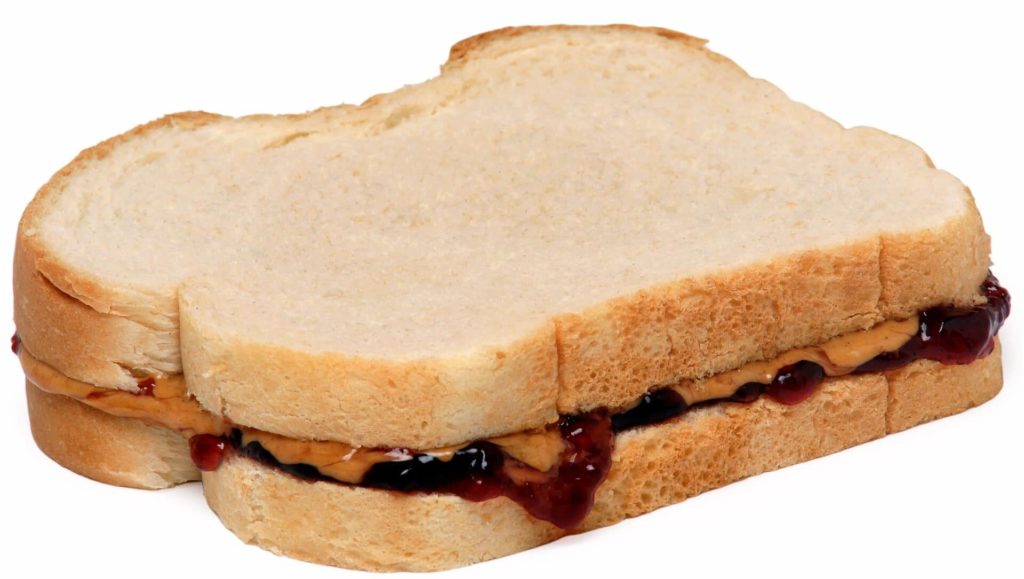
Peanut butter and jelly is a classic American sandwich, but do you know how it came to be?
Prior to its nationwide fame, peanut butter had a long journey:
- 1893, a Dr. John Harvey Kellogg patented and presented peanut butter at the World Fair
- Dr. Ambrose Straub had already been making it for elderly patients who couldn’t eat solid food
- Dr. George Washington Carver, an innovative agricultural researcher, credited the peanut paste as one of many ways to use peanuts (as a part of a plan to promote the crop)
Jams, jellies, and fruit spreads had an even longer history:
- Fruit preservation methods dates back centuries ago, from the Middle East
- A few centuries after, marmalade was enjoyed by royalty as a sweet delicacy
- Dr. Thomas Branwell Welch’s company made “Grapelade” for US troops during WWI (Welch’s grape jelly then debuted on shelves in 1923)
And we can’t forget the bread. Thanks to one innovative inventor, Americans were eating commercially produced and pre-sliced bread by 1930.The iconic PB&J had been a way to feed troops during WWI, conveniently delivering nutrition, taste, and an easy-to-eat meal. Decades later, we have a delicious treat and better data insights to chronicle the ascent of the peanut butter and jelly sandwich.
The data of a cultural phenomenon
Thanks to the rapid commercialization of all three ingredients, making a peanut butter and jelly sandwiches is easy and affordable. A combination of industry innovation (sliced bread, canning, airtight packaging, etc) is what put ingredients on the shelves. And it’s this availability and culturally iconic significance that leads Americans to spend nearly $800 million on peanut butter every year.
The Bureau of Labor Statistics produces the Consumer Price Index by collecting and calculating sale performance. The CPI reveals important monetary details. Like, do current wages keep up with inflation rates? Because if they don’t, people have less money to spend meaning less economic activity across the board. But oddly enough, peanut butter and jelly sandwiches are some of the few items that do not rise in cost, and perhaps part of what keeps peanut butter profits increasing every year. But to gain insight, you have to ask many analytic questions.
How does the agricultural industry maintain cost? Which demographic is most likely to buy? Where are sales highest? What kind of advertising do consumers respond to?
The PB&J market is one that benefits from consistent industry analysis. Comprehensive market segmentation analytics and marketing helps keep the peanut butter giants, like Jif and Skippy, alive and thriving by extracting key insights for ROI. It’s an analytic journey that incorporates a complete range of data and analysis methods.
Enjoy a PB&J!
Get crafty by choosing different types of bread, nut butters, and fruit spreads.
*Carefully evaluate ingredients to avoid contaminants that can cause any food allergies such as the peanut allergy.
